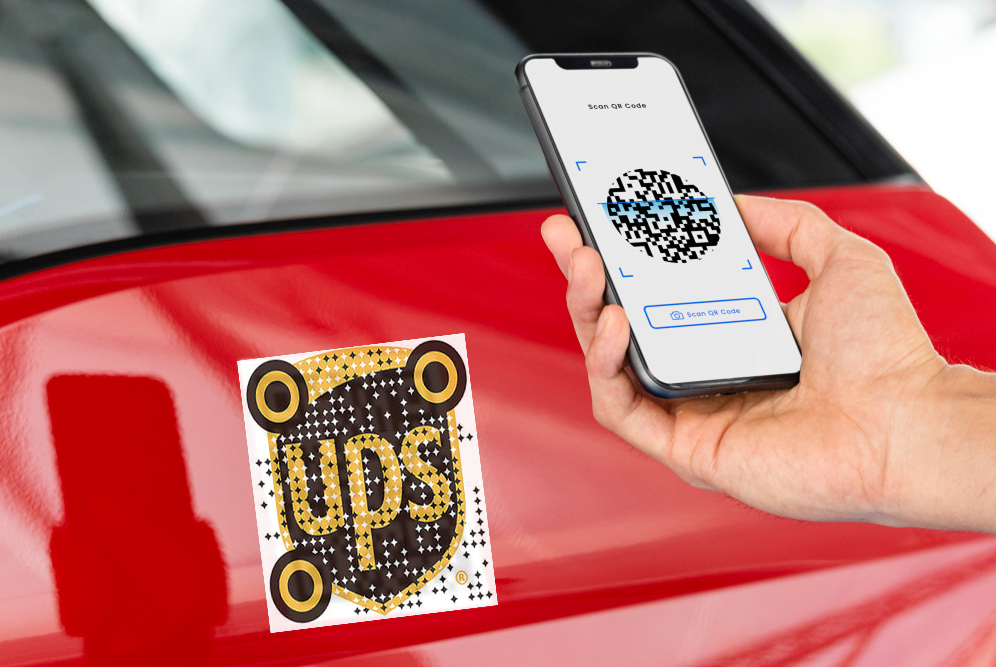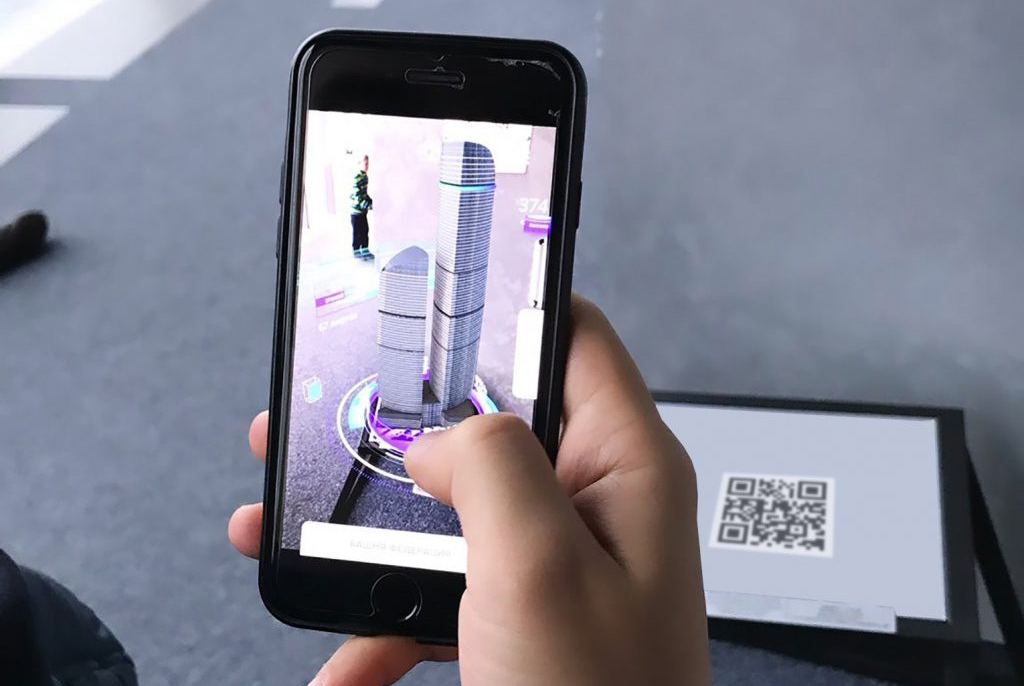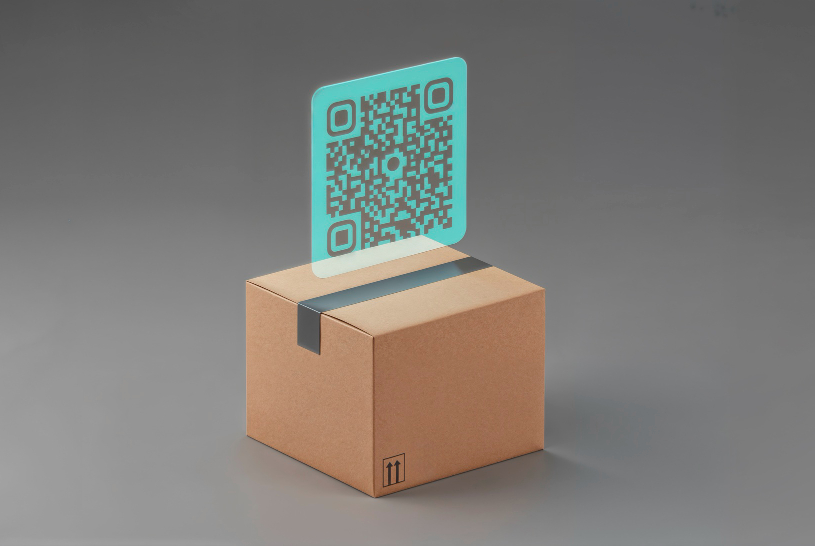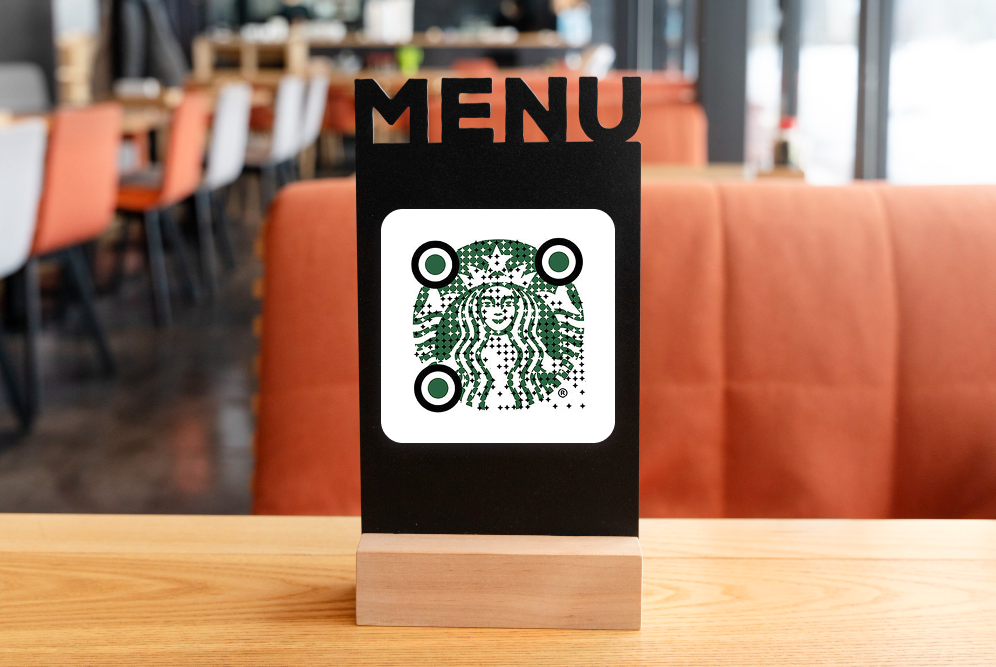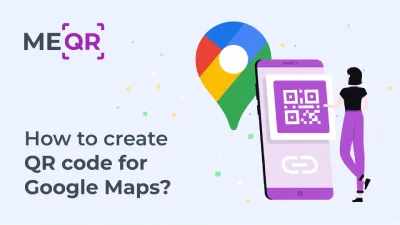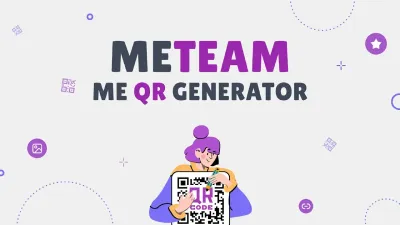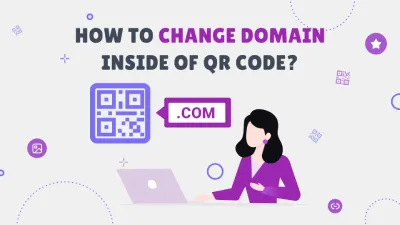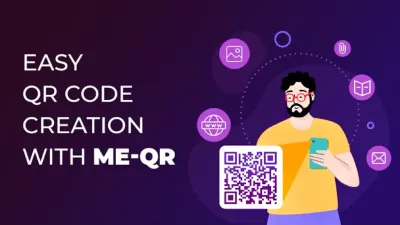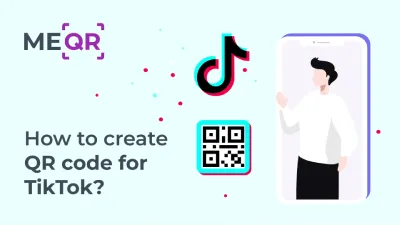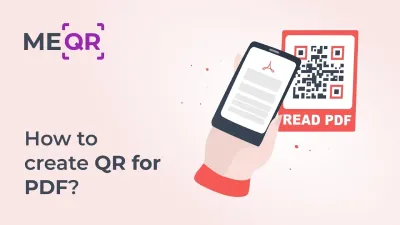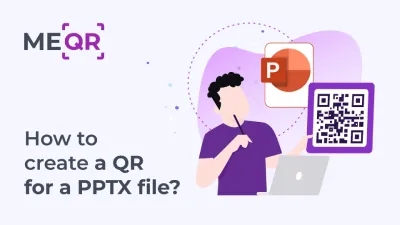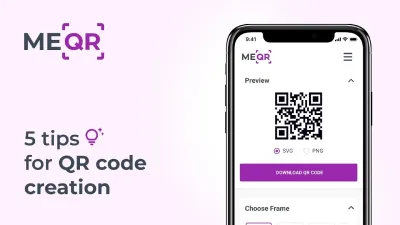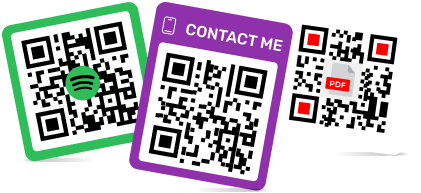Aztec Code vs. QR Code: A Full Spectrum Comparison
To create a QR code for a link, video or picture - click on the button below.

The use of barcodes has become ubiquitous across various industries. Two of the most prominent types of barcodes are the Aztec Code and the QR Code. This article will provide a detailed comparison between Aztec Code and QR Code, exploring their structures, capabilities, and typical uses. Additionally, it will highlight why QR Codes might be better than Aztec Codes in various scenarios.
Introduction to Aztec Code and QR Code
Before diving into the specifics, it's essential to understand what Aztec Codes and QR Codes are. Both are types of two-dimensional barcodes, but they differ significantly in their structure, capabilities, and applications.
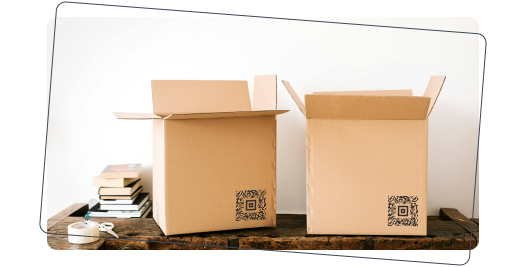
Overview of Aztec Code
Aztec QR Code is a type of 2D barcode symbology that was designed to be readable even when printed at small sizes or displayed on low-resolution screens. Its name is derived from the central finder pattern that resembles an Aztec pyramid. Aztec Codes are often used in environments where space is at a premium, such as on tickets or small labels. They are characterized by their high data density and the ability to be read even if a portion of the code is damaged or obscured.
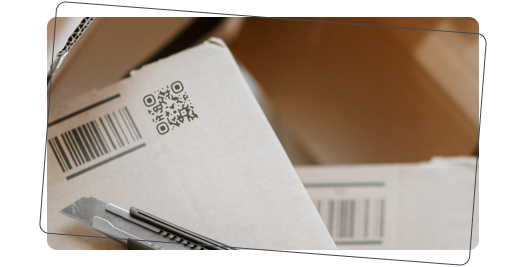
Overview of QR Code
QR Code, short for Quick Response Code, is another type of 2D barcode that has gained widespread popularity due to its versatility and ease of use. QR codes can store a variety of information, from TikTok to crypto payment, and can be scanned quickly and easily by smartphones and other devices. This widespread adaptability makes them a preferred choice in marketing, logistics, and everyday consumer interactions.
History and Development
Understanding the historical context of these codes provides insight into their development and adoption.

The Evolution of Aztec Code
QR Code Aztec was developed by Andrew Longacre and Robert Hussey in the mid-1990s. It was designed to offer high data density and robust error correction capabilities. Over time, Aztec Code has found its niche in specific applications, particularly in the transportation and logistics industries.
The initial design focused on overcoming limitations of previous barcode systems, allowing for more information to be encoded in a smaller space without requiring a quiet zone around the code.

The Rise of QR Code
QR Code was invented in 1994 by Denso Wave, a subsidiary of Toyota, to track automobile parts during the manufacturing process. Its ability to store more information than traditional barcodes, coupled with its fast readability, led to its rapid adoption across various sectors.
Key milestones in its history include the introduction of a QR Code scanning app for smartphones, which significantly broadened its usability. The adoption of QR Codes surged with the rise of mobile technology, making it easy for anyone with a smartphone to scan and interact with the codes.
Technical Specifications
Comparing the technical aspects of Aztec Codes and QR Codes reveals their strengths and limitations.
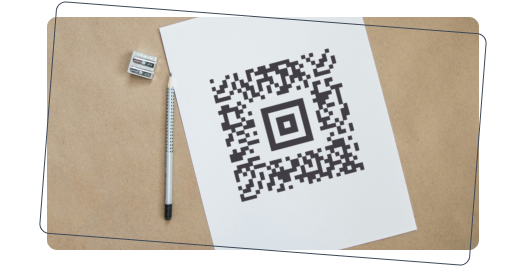
Create Aztec Code
The process of creating an Aztec Code involves several steps:
-
Select a Data Input: Determine the information to be encoded.
-
Choose Encoding Software: Use software like ZXing or another Aztec QR code generator.
-
Generate the Code: Input data into the software and generate the Aztec Code.
Each of these steps is crucial for ensuring that the Aztec Code is generated correctly and is scannable.

Create QR Code
The process of creating a QR Code typically involves these steps:
-
Select a Data Input: Decide on the type of data (video, audio, etc.).
-
Choose a QR Code Generator: Use software or online tools like ME-QR.
-
Generate the Code: Input the data and generate the QR Code.
Following these steps ensures that the QR Code is functional and meets the required specifications.
Put your QR code link, add name for your QR, select content category and generate!
Put your QR code link, add name for your QR,
select content category and generate!

Aztec vs. QR: Features and Capabilities
Each type of code has unique features and capabilities that make them suitable for different applications.

Aztec Code Features
Aztec Codes are designed to be highly efficient and robust. They are particularly useful in environments where space is limited and high data density is required.

Unique Aspects of Aztec Code
Aztec QR have several unique aspects that distinguish them from other barcodes:
-
High Data Density: Can store a large amount of data in a small area.
-
Robust Error Correction: Maintains data integrity even if part of the code is damaged.
-
No Quiet Zone Required: Can be printed without a surrounding blank area, saving space.
These features make Aztec Codes ideal for specific use cases where space and data integrity are crucial.
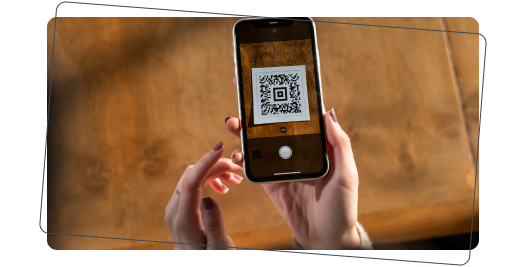
Scan Aztec Code: How It Works
Aztec Codes can be scanned using a dedicated Aztec QR code reader. The central finder pattern aids in quick orientation and scanning. The scanning process involves locating the central finder pattern, which helps the scanner determine the size and orientation of the code, making it easier to decode the embedded data accurately.
QR Code Features
QR Codes are known for their versatility and ease of use. Their ability to be scanned quickly and from various angles makes them highly practical for a wide range of applications.
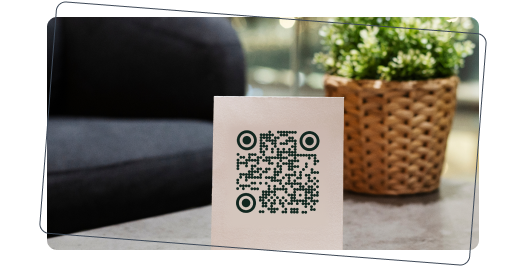
Unique Aspects of QR Code
QR Codes offer several unique features that contribute to their popularity:
-
High Speed Scanning: QR Codes can be scanned quickly, even at various angles.
-
Customizable Design: Allows for logo incorporation and color changes.
-
Wide Adoption: Supported by most smartphones and scanning apps.
These features make QR Codes a preferred choice for many industries.

QR Code Capabilities
QR Codes have a wide range of capabilities, including:
-
Linking to URLs: Direct users to websites.
-
Storing Information: Embed text, contact information, or even payment data.
-
Tracking and Analytics: Monitor scan data and user interactions.
These capabilities enhance the functionality of QR Codes in various applications.
Performance Comparison: Aztec vs. QR Code
A direct comparison based on performance criteria helps highlight the differences between Aztec Codes and QR Codes.

Storage Capacity
When comparing storage capacity, the differences are notable:
-
Aztec Code: Can store up to 3,832 numeric characters.
-
QR Code: Can store up to 7,089 numeric characters, making it superior in terms of storage capacity.
This difference in capacity can influence the choice of code based on the amount of data that needs to be stored.

Error Correction
Error correction capabilities are crucial for ensuring data integrity:
-
Aztec Code: Offers robust error correction but is limited in flexibility.
-
QR Code: Provides four levels of error correction (L, M, Q, H), offering greater flexibility and resilience.
The flexibility of QR Code error correction levels can be advantageous in various scenarios.


Scan Speed
Scanning speed is an important factor in many applications:
-
Aztec Code: Generally slower to scan due to its more complex design.
-
QR Code: Faster scanning due to its simpler structure and widespread scanner support.
The faster scanning speed of QR Codes can improve efficiency in high-traffic environments.
Usage and Applications
Exploring the applications of each code type reveals their practical uses in various industries.

Aztec Code Applications
Aztec Codes are commonly used in the following scenarios:
-
Transportation Tickets: Used on train and airline tickets for compact data storage.
-
Logistics: Labeling small items with high-density information.
These applications take advantage of the high data density and compact size of Aztec Codes.

QR Code Applications
QR Codes are frequently used in various contexts:
-
Marketing: Linking to promotional content or product information.
-
Payments: Facilitating cashless transactions via mobile apps.
-
Inventory Management: Tracking products in warehouses.
These common uses demonstrate the flexibility and functionality of QR Codes.

Conclusion
Both Aztec Codes and QR Codes have their unique strengths and applications. Aztec Codes are ideal for high-density data storage in small spaces and are robust against damage. However, QR Codes are generally faster to scan, more widely supported, and offer greater versatility, making them a better choice in many scenarios. When choosing between the two, consider the specific requirements of your application to determine the most suitable option.


